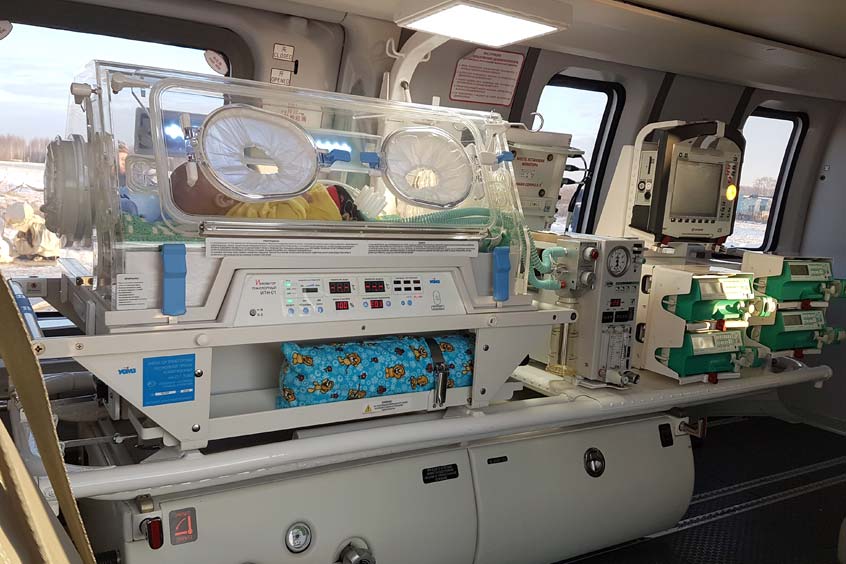Why visit ACE ’25?

Russian Helicopters holding company, a part of the Rostec State Corporation, is to equip updated Ansat medical helicopters with systems for transporting newborns. The device has passed the necessary certification and received approval from Russia's Federal Air Transport Agency.
The newborn incubators supplement a new medical interior, which is used in Ansat medical helicopters. The module has a modified layout, adapted to unified stretchers, gurneys and other equipment, thanks to which the patient's transportation has become more convenient. While transferring a person on to the helicopter, there is no need to shift and reconnect life support systems. Now it is possible for a single person to load a patient into a helicopter, and the whole process takes less than 20 seconds.
“When it comes to saving patients, including children, every minute can count,” states Oleg Yevtushenko, executive director of the Rostec State Corporation. “The incubators for newborns, which will now be installed in the aeromedical-configured Ansats, will help to quickly deliver newborns to the hospital. The new version of the helicopter includes a ventilator, a condition monitoring unit, a respirator and an infusion pump. The new design makes it impossible to disconnect the patient from the life support devices during loading, which increases the speed and safety of transportation.”
The module is manufactured at the Kazan Aggregate Plant, it has passed all necessary certifications and is offered to customers as an option.
“The approval of the Federal Air Transport Agency significantly expands the range of application of the new MS-A medical module for the Ansat helicopter. Now it will be possible to transport patients of absolutely any age,” comments Andrey Boginsky, director general of Russian Helicopters. “The design bureau of Kazan Helicopters continues to work in this direction, and in the context of a pandemic, the certification of an isolation unit for a new medical module is especially relevant. This issue will also be resolved in the near future.”
Ansat helicopters carry out rescue services in various regions of the Russian Federation, and the geography of their use is constantly expanding. The modern programme for the development of sanitary aviation in Russia has been implemented since 2017 and is now part of the national healthcare project.
On 29 December, the upgraded Ansat-M helicopter took off for the first time with an increased flight range of up to 800km with an additional fuel tank, which is especially important for medical evacuation, as it allows to perform work on a larger area of the region without refuelling.